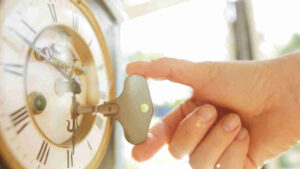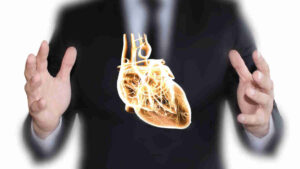Dr Boreham’s Crucible: Breaking down the post-COVID market opportunity for Uscom

Tim Boreham is one of Australia’s best-known small cap analysts and business journalists.
It’s only just ticked into November but it’s starting to feel a bit like Christmas – and the tail end of the pandemic, as nations re-open their doors and borders.
But we will be dealing with the health consequences of Covid for years to come?
Uscom chief Rob Phillips estimates up to two billion people – one quarter of the world’s people – will have had the virus by the time the plague has done its dash.
Many will have ongoing symptoms – the so-called Long Covid – marked by ongoing lung inflammation.
According to the Worldometer web site, about 244 million people have had the disease, with 4.96 million of them dying.
So surely two billion is an over-the-top number?
“Absolutely not,” Prof Phillips says.
The reason lies with the great unknown of how many people have had Covid without knowing it. The published data is based on patients presenting with symptoms, but about 90 percent of Covid ‘patients’ remain asymptomatic and untested (especially in poor populous places like India).
“Despite most patients being asymptomatic, they are equally seriously afflicted with post-Covid syndrome and may get very serious symptoms, such as shortness of breath and pulmonary fibrosis,” Prof Phillips says.
Pulmonary fibrosis causes poor lung function and may eventually require lung transplantation.
“We have yet to establish the long-term incidence and progress of this complication in recovered patients and its impact on public health.”
Right place, right time
With its non-invasive devices to monitor cardiovascular and pulmonary function, Uscom (ASX:UCM) is in pole position to cover the ongoing monitoring required.
“A critical part of understanding the cardiovascular and pulmonary systems is accurate and non-invasive measurement, and we have sector-leading technologies in the Uscom 1A and Spirosonic devices,” Prof Phillips says.
Uscom (as in Ultra-Sonic Cardiac Output Monitors) was co-founded in 1999 by Coffs Harbour native Prof Phillips, an ultrasound specialist and University of Queensland professor of medicine.
The other founder was fellow Coffs Harbour resident Gary Davey, the founding CEO of Rupert Murdoch’s Sky and Star pay TV networks in Britain.
Gazing out over the endless banana plantations, Prof Phillips saw a better way of measuring blood flows in and around the heart, other than a highly invasive pulmonary artery catheter.
“Blood monitoring techniques almost always get it wrong by measuring the wrong things using the wrong devices,” he says. “It’s about the blood flow at the heart; blood pressure reflects only a small part of understanding the circulation.”
“Furthermore, blood pressure in the arm is less accurate and predictive than pressure at the heart, which we also measure [with the company’s BP+ product].”
Uscom’s devices address conditions responsible for about 75 percent of all disease mortality, including heart failure, sepsis, fluid management, hypertension, asthma and chronic obstructive pulmonary disease.
Uscom is Sydney based and has operations in Sydney, Beijing and Budapest, with offices in Auckland, Singapore, London and Los Angeles.
Uscom listed in December 2003 with the support of Bell Potter’s Colin Bell and more recently Chinese billionaire Xianhui Meng joined the company.
1500 reasons why
This year Uscom churned out its 1500th Uscom1A, its oldest device which to date has generated $35 million in sales.
Uscom1A is a haemodynamic monitor to measure cardiovascular function non-invasively. It is now widely used in intensive care and emergency departments, as well as for anaesthesia, paediatric care, sepsis and monitoring pre-eclampsia in pregnancy.
The device is installed in four of the top 10 US paediatric hospitals, with another three trialing it.
Early in the pandemic, China’s National Health and Medical Commission recommended Uscom’s devices for monitoring severe Covid cases, and has since installed another 50 devices at infectious disease centres.
This early adoption should not be surprising, given the tech got accelerated approval in Hong Kong during the 2003-’04 outbreak of SARS, Covid-19’s coronavirus cousin.
BP+, a central blood pressure and pressure wave monitor, was owned by New Zealand’s Pulsecore, and bought by Uscom in 2013.
Spirosonic and Spirosonic Air
Acquired via the purchase of the Budapest based Thor Laboratories in 2015, Spirosonic is an ultrasonic spirometer for asthma and chronic obstructive pulmonary disease.
Spirometers have been around for a long time, but involve blowing into a fan which results in sputum flying in all directions – the ultimate super spreaders.
Ew!
They are meant to be cleaned and calibrated every day – but often aren’t. Spirosonics’ more hygienic disinfection method involves patients blowing through an easily-cleaned smooth-walled tube.
Meanwhile the company is advancing its Spirosonic Air, a home-use version with a wireless connection allowing a doctor to analyze the results in the hospital.
“It can remotely transmit every breath you take,” Prof Phillips says.
The device is relevant for ongoing monitoring of asthma, chronic obstructive pulmonary disease (COPD) and long covid-induced inflammation.
It is also useful for calibration of anaesthetic devices and continuous positive air pressure (sleep apnoea) equipment.
Research house Markets and Markets expects the spirometry market to grow by 150 percent over the next six years, from $US2.6 billion to $US6.5 billion.
The tick of approval
Uscom 1A, BP+ and Spirosonic are approved in Europe (Conformité Européenne, or CE, mark) and by the Australian Therapeutics Goods Administration.
Uscom 1A is also approved by China’s National Medical Products Administration (NMPA) and cleared in the US (as a 510k device) by the Food and Drug Administration (FDA).
In May this year the NMPA approved the BP+ monitors and the company is girding for commercial release in China, one of the world’s largest hypertension and vascular health markets.
The company is at the tail end of Chinese and FDA approval for Spirosonic.
Early in July, Russia’s regulator approved Uscom 1A, to be distributed by a mob called Wondermed, after a three-year review.
Depending on one’s definition of Europe, Russia is Europe’s biggest market with 150 million people.
Will your ventilator kill or cure you?
Uscom also plays to the Covid (and post Covid) market with Ventitest, its ultrasonic ventilation calibration device to optimize the performance (flow levels) of ventilators.
Prof Phillips notes that critical Covid patients can die from – or with – ventilation-induced lung injury (VILI), a condition caused by poorly operated or poorly calibrated ventilators.
“If you give a patient too much volume, pressure and flow during ventilation it may damage the inflamed lung linings, reducing blood oxygenation and damaging sensitive organs,” he says.
Conversely, inadequate oxygenation also has poor consequences, so like Little Bear’s misappropriated porridge the flow has to be just right.
Ventilators should be calibrated at least daily but – guess what ? – they’re often not.
Because Ventitest is not a medical device per se, it doesn’t need to go through the same regulatory hoops. The company is making sure the device is tickety-boo ahead of launch from mid-2022.
Finances and performance
With the lack of access to hospitals following the Delta outbreak impacting sales, Uscom’s fourth and first quarters were especially tough.
Still, the company was operationally cash flow positive for the full year to June 30 2021, to the tune of $55,000 (a turnaround on previous outflows of $30,000).
Last year the Uscom 1A spoke for 77 percent of turnover, with the Spirosonics accounting for a further 19 percent.
Naturally, the sales bias to Uscom 1A should moderate as the new products are rolled out.
In the US, the company has adopted a new distribution model which it planned to implement two years ago, before the pandemic delayed things.
“The US is showing really exciting signs of life for us,” says Prof Phillips, who adds that seven of the nation’s top 10 paediatric hospitals will be using Uscom 1A before too long.
As of the June 30 balance date, Uscom had a slender – but adequate – cash balance of $1.7 million.
Uscom shares were worth 19 cents a year ago, falling to a 12-month low of 10 cents in mid-May 2021. They peaked at $3.75 in May 2004 and bottomed at seven cents in December 2011.
What’s wrong, me old China?
An unusual aspect of Uscom is that 64 percent of its sales were derived from China, with a further 26 percent from Europe. Normally the most important medical device market, US is lumped in with ‘other’ and accounted for eight percent.
Australia is barely worth mentioning, accounting for a mere two percent of sales.
Prof Phillips says Uscom’s China bias often raises eyebrows, but the company would have been in a “terrible position” otherwise, given the frozen US and European markets for the last two years.
“When you get challenges that are as unpredictable as Covid, you appreciate the value of a diversified global entity,” he says.
Uscom’s China involvement is reflected in Mr Meng’s involvement as both Uscom’s biggest shareholder and non-executive director.
Holed up in Beijing because of lockdown restrictions, Prof Phillips has an eyewitness view of the on-the-ground fallout from the strained trade relationships between China and Australia.
“From a personal viewpoint I’m terribly disappointed at the way the relationship has been handled [by Canberra],” he says.
“It’s pointless to offend someone who buys 35 percent of your exports when the export market is such a competitive one. It makes life unnecessarily difficult for us all trying to support Australia’s export economy.”
Luckily, Uscom isn’t feeling the strain of Australian wine, iron ore and coal exporters as the right doors continue to remain open for medical products the Chinese can’t make themselves.
Dr Boreham’s diagnosis:
Investors often ask Prof Phillips why Uscom is valued at just over $20 million, given the company has grown revenues for the last nine consecutive years at an annual average rate of 24 per cent.
“I have no idea,” he confides. “It miffs me when hand sanitizer companies are worth $1 billion and we have been saving kids’ lives all that time.”
In your columnist’s opinion – not that anyone is asking for it – the lowly valuation probably stems from Uscom’s still modest revenues even after two decades.
Still, the company has been consistent in its approach to market and has not been strayed by the temptations of medicinal cannabis, bat dung-based cosmeceuticals or coal mining in Alabama.
Management also deserves credit for persisting with the Chinese market, especially at a time of political tensions which means the company won’t get any free hits.
Prof Phillips says the company will shine next year as more regulatory approvals flow through.
In the meantime, he’s happy to see Uscom’s devices used in literally life and death situations.
“Very few devices out of Australia have changed clinical medicine, but we have in critical care for paediatrics and maternal health.”
Disclosure: Dr Boreham is not a qualified medical practitioner and does not possess a doctorate of any sort. But he does possess man boobs and does his breast to makes sense of the technical stuff.
This column first appeared in Biotech Daily.
UNLOCK INSIGHTS
Discover the untold stories of emerging ASX stocks.
Daily news and expert analysis, it's free to subscribe.
By proceeding, you confirm you understand that we handle personal information in accordance with our Privacy Policy.








